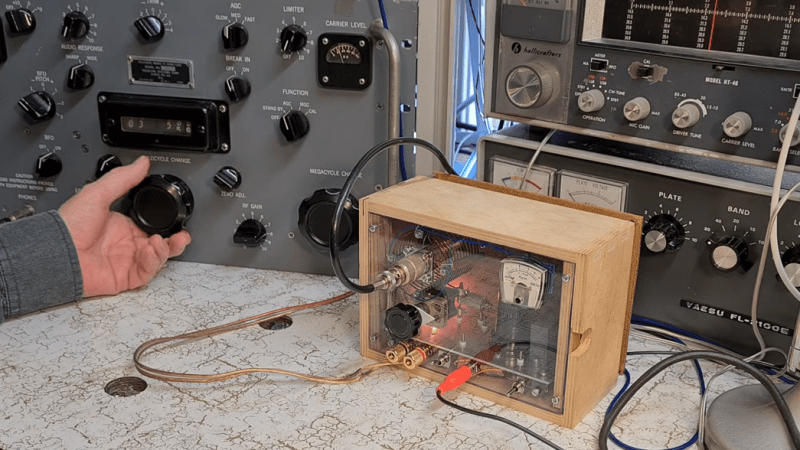We’ve said it before and we’ll say it again: the best part about holding an amateur radio license is that it lets you build and use your own transmitting equipment. Hams have been doing this for more than a century — indeed, it was once the only way to get on the air — using whatever technology was available. But the mix of technologies in this low-power transmitter for the 80-meter band is something you don’t see every day.
As ham [Helge Fykse (LA6NCA)] describes in the video below, the project began when he came into possession of a bonanza of vacuum tubes — 12A6 tetrodes, specifically. The new-old-stock tubes were perfect for an RF power amplifier, but that left the problem of what to use for an oscillator. [Helge] chose to meld the old with the new and used oscillator board that he designed. The board has an ATmega88 microcontroller and an Si5351 oscillator, along with a 3V3 regulator to let the module run on 12 volts. And for a nice retro touch, [Helge] put the board in a 3D printed case that looks like an old-fashioned quartz crystal.
There are some other nice design touches here too. A low-pass filter cleans up the harmonics of the oscillator’s 3.5-MHz square wave output before feeding it to the amplifier, in a nod to proper spectrum hygiene. The primary for the amp’s air-core output transformer is hand-wound, with 3D printed spacers to keep the winding neat and even. The tuning process shown below is interesting, and the transmitter was used to make a solid contact with another ham about 100 km away. And we really liked the look of [Helge]’s shack, stuffed as it is with gear both old and new.
We’ve personally tried the Si5351 for QRP transmitters before, but this blend of the old and new really makes us want to find some tubes and get to playing.
Thanks to [Stephen Walters] for the tip.















Not bad for one pentode given that the voltage out of the VCXO isn’t more than 3v3. I’ll bet there was some “tuning” of component values to keep the pentode away from idle and saturation. Oscillators never do, amplifiers always will.
I haven’t seen those concentric plate trimmer caps for years. And that capacitor on the lathe had the most parasitic inductance I have ever seen.
Looks like a bit of ex military (Comms).
Pair it up with a RAL-6 for fun
Very nice looking R390A.
Yes, I was shocked by how much they cost. I did find a R-392 on eBay but need to get it on the air.
I like the unusual combination of technologies – how many ATmegas are paired with valves?
And damn it why do I like looking at other peoples’ workshops?
Absolutely a great project….simple enough for both young and old adventurers in radio technology.
LA6NCA
Thanks for the nice post.
I use an ATmega328 uP
So it behaves like an Arduino Pro Mini.
Plus, it probably gives a warm, buttery tone to the radio waves ;)
Old post but I noticed the R-390 right away. I have a much rarer R-391 that has auto tune motors. Interesting rig when the motors are locked down and it is frequency hunting!!